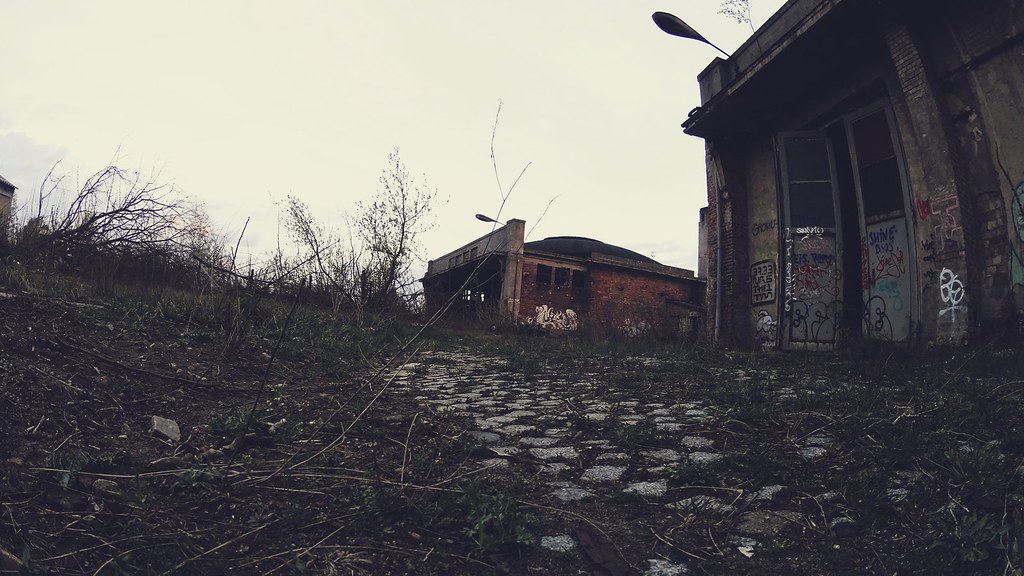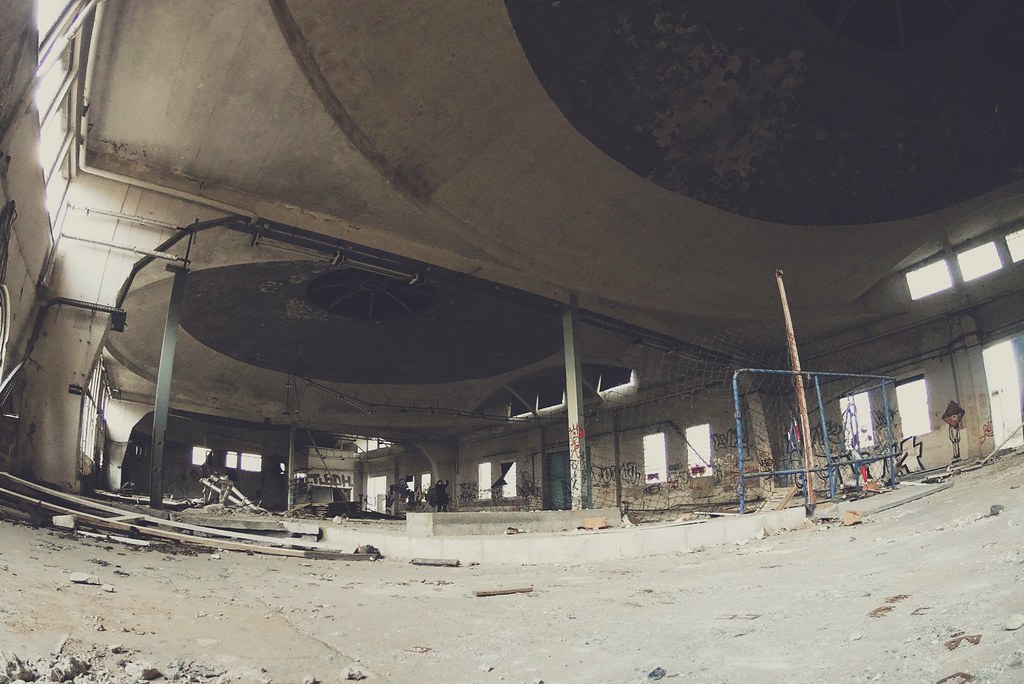Flugzeughallen Karlshorst lies somewhere in Karlshorst, an area of Berlin not famous for its tourist spots. But they are famous for some things, and most of them are related to the end of the Second World War since there was the place where the unconditional surrender of Nazi Germany against the Allied forces was signed on the 8th of May 1945 and the following Cold War.
You can find the German-Russian Museum here, but we didn’t go to Karlshorst for that. We were looking for the Flugzeughallen Karlshorst.

What is the Flugzeughallen Karlshorst?
In 1911, a small airport was constructed in Karlshorst. It consisted of an aerodrome and a few airplane hangars. This place came to be known as Flugzeughallen Karlshorst.
During the First World War, the war industry was at full speed, and the aerodrome was expanded, including a dedicated railway that was later removed.
But, after the defeat of the German Empire, the Versailles Treaty forbade Germany to use any aircraft, which meant that this airbase was abandoned and unused until the Nazis decided to re-arm Germany.
With rearmament in mind, the Nazis decided to expand the existing military academies, and in 1936, the Festungspionierschule der Deutschen Wehrmacht construction began. After the end of the Second World War, the whole complex was taken over by the Soviet Army, including the Officers Casino, where the unconditional surrender of Nazi Germany against the Allied forces was signed on May 1945. This was where the Soviet Military Administration of Germany and the KGB started to work in Germany.
The complex could become anything after the German Reunification and the withdrawal of Allied Forces from Germany. But this is Berlin, which is why they have so many abandoned places. Some buildings were preserved and became museums, but a large part was torn down. The north part of the complex is going through renovations, and when you walk past it, you can see lots of trucks and debris. But the hangars are still there.
But what about the hangars?
The hangars have been put under Denkmalschutz, meaning they could be saved, but I don’t think this will happen. The pictures on this post are from the flight hangars on the southern side, and they remain intact and abandoned. But, we saw that some people have been working close to the hangars and may go away soon.
We went to the Flugzeughallen Karlshorst back in 2014 while researching places to explore during our hosted photographic meetings. However, since the place is surrounded by fences and we read online that the neighbors are suspicious of people walking around, we decided to go elsewhere.
We think that the Flugzeughallen Karlshorst will be gone soon. Maybe a few housing units will be built there in the next couple of months, but we are not sure. If you want to try your luck and explore the place, the map below will help you. You have to find the rounded-shaped buildings.
Try to go there in the early evening to avoid being caught by some people working there.
Exploring the Historical Significance of Flugzeughallen Karlshorst in Berlin
Str. am Heizhaus 85 – Karlshorst
Berlin
If you are interested in what we wrote about other abandoned airports and airfields around Berlin, you will love to read about the Flugplatz Oranienburg, Flugplatz Rangsdorf, Flugplatz Johannisthal , and Flugplatz Brand.



